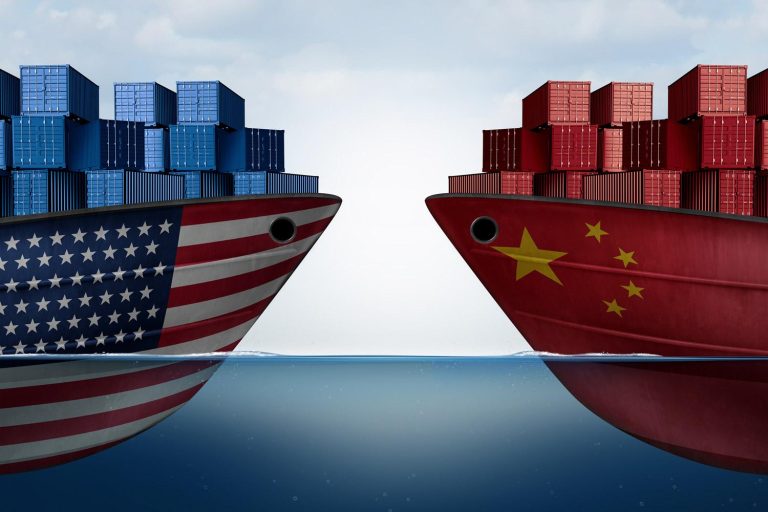Global trade tensions are reverberating through boardrooms and factory floors, as tariffs, sanctions, and export controls upend supply chains and inflate costs. From semiconductors to steel, autos to agriculture, companies are contending with delays, shortages, and shifting rules that complicate everything from sourcing to sales.
The flashpoints are varied and overlapping: a deepening U.S.-China tech rivalry, sanctions and countersanctions tied to the war in Ukraine, export curbs on critical minerals, and disputes over green subsidies and industrial policy. The result is a patchwork of regulatory regimes that raises compliance risks and forces firms to rethink where they make, move, and market their products.
In response, executives are redrawing logistics maps, diversifying suppliers, and considering nearshoring and “China-plus-one” strategies, even as they warn of pressure on margins and investment plans. With trade policy increasingly entwined with national security and climate goals, businesses are bracing for a prolonged period of uncertainty-and a new operating reality defined by resilience over efficiency.
Table of Contents
- Trade Barriers Tariffs and Export Controls Disrupt Supply Chains and Elevate Operating Costs
- Sector Impact Deepens as Firms Confront Compliance Backlogs Currency Volatility and Working Capital Strain
- Resilience Strategy Diversify Suppliers Build Regional Hubs Hedge Currencies Automate Trade Compliance and Adjust Inventory Policies
- Concluding Remarks
Trade Barriers Tariffs and Export Controls Disrupt Supply Chains and Elevate Operating Costs
Escalating cross-border levies and tightened licensing regimes are rippling through production networks, forcing manufacturers and retailers to reconfigure sourcing, reprice SKUs, and carry thicker buffers amid longer lead times. Logistics providers cite rerouted lanes and container reshuffles, while finance teams report margin compression from double-digit duties and duplicated compliance costs. Sensitive sectors-especially semiconductors, batteries, and industrial machinery-face heightened scrutiny that slows shipments and complicates vendor onboarding, with smaller suppliers disproportionately exposed as working-capital needs surge and trade credit tightens.
- Rising landed costs: New and expanded tariffs, safeguard measures, and anti-dumping duties inflate unit economics, limiting pass-through amid soft demand.
- Procurement pivots: Rapid supplier diversification, dual-sourcing, and country-of-origin shifts to meet rules-of-origin and minimize duty exposure.
- Inventory and logistics: Higher safety stocks, extended lead times, and route changes to tariff-favorable gateways increase warehousing and freight outlays.
- Compliance burden: Stricter export controls, end-use/end-user screening, and denied-party checks expand documentation, audit risk, and penalties for noncompliance.
- Sector hot spots: Chips, telecom gear, EV components, and renewables face licensing delays and blacklisting risks that stall deliveries.
- Cash-flow strain: Elevated working capital needs, pricier trade credit insurance, and tighter L/C terms compress liquidity.
- Mitigation playbook: Nearshoring and “friend-shoring,” bonded zones, FTA optimization, and tariff engineering to cushion cost shocks.
- Outlook: Policy volatility tied to elections, sanctions, and WTO disputes keeps planning anchored in scenario modeling and rapid repricing mechanisms.
Sector Impact Deepens as Firms Confront Compliance Backlogs Currency Volatility and Working Capital Strain
Across manufacturing, retail, and logistics, executives report mounting operational friction as regulatory checks elongate timelines, foreign-exchange dislocations erode margins, and balance sheets absorb higher inventory and financing costs; procurement plans are being redrawn, treasury policies tightened, and supplier terms renegotiated as firms race to protect cash while maintaining service levels in volatile trade lanes.
- Compliance backlogs: Extended screening and licensing cycles are slowing shipments, raising demurrage risk, and forcing costly rerouting.
- Currency volatility: Wider intraday swings are inflating hedging costs, complicating pricing, and exposing unhedged receivables to sudden hits.
- Working capital strain: Rising DSO and precautionary stock builds are tightening liquidity as lenders and credit insurers grow more selective.
- Contract pressures: Renegotiations add FX adjustment clauses, shorter tenors, and stricter collateral to stabilize cash flow visibility.
- Operational pivots: Firms accelerate nearshoring, diversify banking partners, and deploy trade-tech tools to triage compliance tasks and track exposure in real time.
Resilience Strategy Diversify Suppliers Build Regional Hubs Hedge Currencies Automate Trade Compliance and Adjust Inventory Policies
With volatility in tariffs, sanctions, and freight lanes widening, operations chiefs are fast-tracking concrete playbooks to stabilize supply and margins, prioritizing actionable moves that reduce exposure while preserving customer service levels and cash.
- Diversify suppliers: pivot from single-country reliance to dual and multi-sourcing across politically uncorrelated regions; secure secondary tooling, mirrored BOMs, and synchronized quality audits to curb PPV spikes and defect drift.
- Build regional hubs: stand up nearshore assembly and distribution nodes inside key customs unions to compress lead times, limit demurrage risk, and capitalize on preferential agreements.
- Hedge currencies: deploy layered hedging and natural offsets, align pricing clauses to FX bands, and tighten treasury-operations coordination for faster revaluation and exposure netting.
- Automate trade compliance: integrate classification and screening engines for HS codes, origin tracing, sanctions/denied-party checks, and embargo updates; connect broker APIs to cut manual entry and penalty risk.
- Adjust inventory policies: recalibrate safety stock on variability, split cycles by decoupling strategic components while running lean on commoditized SKUs, and trigger dynamic reorder points tied to port congestion and supplier reliability indices.
Concluding Remarks
For now, executives are recalibrating supply chains, delaying investments, and passing on some costs to customers as they await clarity on tariffs, export controls, and retaliatory measures. Policymakers face pressure to shield domestic industries without deepening disruptions, while central banks weigh inflationary effects tied to trade frictions.
The next phase will hinge on negotiations, potential tariff reviews, and any new export restrictions. Whether tensions ease or harden, the fallout is already reshaping how companies source, price, and compete-leaving global business on alert for a protracted period of uncertainty.


